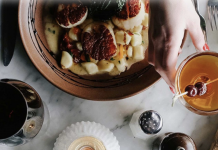In the last quarter of the 19th century, Robert “Fish” Jones operated a fish market in downtown Minneapolis, at Third and Hennepin. He sometimes kept a bear tethered in front of the market, which, oddly enough, seems to have helped him sell fish. He sometimes rode a horse carriage around the city, pulled by zebras. He made such a fantastic fortune selling fish in downtown Minneapolis among the various food markets, including the Great Northern Market, once located where Block E now stands, and the Harlow Gate Market, at First Avenue and First Street, that he was chosen to entertain Ulysses S. Grant and President Lincoln’s brother, Robert, when the two passed through Mill City in 1883. All that’s left of Jones today, though, is his house—that big butter-yellow one near Minnehaha Falls. He had it built as a smaller-sized replica of the poet Longfellow’s, and he lived in it after retiring from the fish business. In retirement, he ran a private zoo (open free to the public one day a week) that included lions, jaguars, leopards, bears, camels, and at least one alligator. ¶ To a contemporary Minneapolis foodie, this story has more than a few points of interest: Imagine a Minneapolis teeming with food markets, with stall after stall of produce, dairy, and meat, as well as specialty vendors for spices, nuts, and so on. Conjure up a scene of grocers who would meet the trains and ferry their contents to their stalls. Finally, picture a Minneapolis filled with so many European immigrants, especially Scandinavian immigrants, and so many East Coast transplants that you could amass a fortune, a private-zoo-with-my-own-camels-fortune, just by selling them fish!
I’ve read before of the tens of thousands of tons of herring pulled out of Lake Superior and sent down to the Cities to feed the assembled herring lovers. I’ve read before of every Minneapolis bar in the old Gateway district offering free lunches of herring and oysters to lure in passing mill, lumber, and railroad workers.
But most days, I forget about all of that. Out of sight, out of mind—and nowhere is this history of Minneapolis more invisible than in the city’s restaurants: We Minneapolis eaters consume deeply from internationally informed French cooking (La Belle Vie, Vincent, Piccolo, Lucia’s, Barbette, even Spoonriver), Italian cooking (Bar La Grassa, Rinata, Il Gatto, D’Amico), Spanish cuisine (Solera), Irish cuisine (the Local, Kieran’s), all-American cooking (Manny’s, 112 Eatery, McCormick & Schmick), and Latin American menus (Masa), but where do we go for some basic herring? We don’t go for herring. Or we didn’t. Until now.
Now we can eat herring right in the heart of downtown, at the Inn, located in the old Handicraft Guild Building, a 1907 structure that was once home to metal workers, weavers, and others following the Arts and Crafts movement (Grant Wood taught here!). One highlight at the Inn is the restaurant’s management team. The place is run by Tim Niver and JD Fratzke, who made their name with another restaurant, the St. Paul steakhouse, the Strip Club. But to me the most interesting thing about the restaurant is the way the Inn’s chef, Tyge Nelson, formerly a cook at La Belle Vie and later head chef at the Barrio in St. Paul, draws on his Norwegian heritage for his cooking style. What other cook around here capitalizes on his or her Scandinavian heritage (which we know nearly half of the chefs here have)?
To taste what’s wonderful and fun about eating with historical Minneapolis in mind, start off your evening by warming up from the cold winter with a strong drink, like the Scandahüvian, a shot of Linie Aquavit (the kind piloted over the equator) and a Grain Belt. Now that you’ve got your drink, glance around: The restaurant décor is almost entirely unchanged from the prior restaurant tenant, Subo, a short-lived Filipino restaurant. There are changes, though: Light fixtures that look like candles set on an iron ring are the main difference. They’re supposed to evoke an old pub feeling: Do they? Order some herring and discuss.
Oh, the herring! It’s marvelous. Sourced from the scant Lake Superior harvest and cured in-house using Nelson’s own family recipe, it’s remarkable stuff: slightly sweet and resisting the fork with a dense pressure I’m not used to after years of jarred herring. Nelson pairs it with a delicately curried potato salad and black-as-night rye bread that he bakes himself and serves well buttered. Eureka! So this is the dish Minneapolis was built on. It’s the top of my list so far for the must-try dishes of 2011, and if you work in a field like search-engine optimization and have a Grandpa Ivar, bring him here immediately, because it may be the only culinary common ground you ever share. Ideally, you’ll pair the herring with the Inn’s other standout starters, like the plump, dense, sweet old-fashioned dinner rolls; the perfectly tender, nicely seasoned, baked oysters; or a gelatinously succulent section of oxtail in broth. (If you’re not feeling your heritage enough to eat oxtail, the mussels in beer and bacon are excellent. But that oxtail is awfully good, like pot roast made of silk!)
Sampling the entrées, I was particularly impressed with the Inn’s cod. For this, Nelson pan-sears a thin fillet until it reaches that unusual state of crisp-as-can-be on one side and oh-so-tender on the other. It was so technically well-accomplished that I experienced one of those moments of not even being present in my own moment, so involved was I in admiring the accomplishment: So perfectly cooked! Who does that? Who even knows enough to appreciate it? Of course, when other people at the table started snaring fork fulls of the splendid fish, I quickly came to my senses and ate it: a joy with the plump white beans and bit of roasted garlic purée. Nelson’s other remarkable dish, a deeply herbal poached fresh Callister chicken, is nothing short of exquisitely tender. My server kept trying to tell me the chicken was braised, which I later discovered he thought was a more appealing description, but, in fact, it’s poached. And if you’ve never had well-poached chicken, treat yourself—it’s as rich and sensuous as chicken gets.
Also, be sure to try Nelson’s yellow turnip purée. Actually a blend of turnips, rutabaga, and a bit of potato, it’s velvety and scrumptious and will make you rethink whatever you thought about turnips. I thought they were dull. I was wrong.
The only things I wasn’t crazy about on the Inn’s menu were, strangely, the bar-food staples: I thought the chicken wings and burgers were solidly fine and nothing more, and I wondered if there was any way the Inn could make them interesting in their own vernacular. Before I visited the restaurant I assumed it would be particularly strong in the same things the Strip Club is, namely steaks and chops. I was half right: I thought the grass-fed beef rib eye was utterly overwhelmed by its accompanying Roquefort-cheese butter, though the pork-handle steak was lovely—sweet and meaty and interestingly plain, which is a compliment rarely delivered to pork. The wine list at the Inn is thin, though adequate. The local micro-brew list is much stronger, which is good because the menu is designed for beer; the herring wants a malty beer like Lake Superior Mesabi red, and the Guinness chocolate cake, from the Salty Tart, cries out for a Guinness.
If you answer its cry and add a final beer to the list of libations that went with your dinner (along with your Scandihüvian aquavit starter), perhaps your mind will turn to the Minneapolis of yore, made of brick buildings, fish markets adorned with live bears, barrel after barrel of herring, and barrel after barrel of beer—not to mention Robert “Fish” Jones and all those fierce, unknown souls on whose shoulders we all stand.
Thirty-Second Scoop
A cozy, comfy downtown spot keyed in to our psychic, urban, till-now-buried past.
Bites
Ideal Meal: House-cured Lake Superior herring or baked oysters; pan-roast cod or poached chicken; a clover-leaf roll and some turnip pureé; a nightcap. Tip: Sidle up to the bar and order a beer, the mussels, and a side of fries: You’ve now got the best moules frites downtown. Hours: Monday–Wednesday 5–10 p.m., Thursday–Saturday 5 p.m–midnight. Prices: Most entrees under $20 Address: The Inn, 89 S. 10th St., Mpls., 612-886-2377, inneats.com






